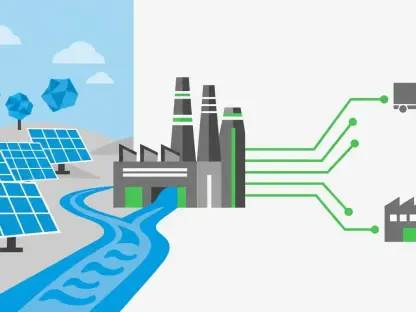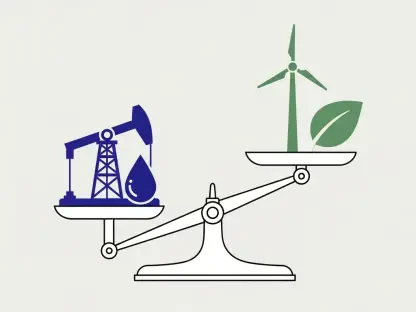Uganda has introduced a pioneering Energy Transition Plan during the COP28 climate summit in Dubai, targeting sustainable development in its energy sector while simultaneously meeting its climate goals. The plan’s ambitious goals include delivering universal energy access, cutting emissions, and generating significant economic gains. Collaborated on with the International Energy Agency (IEA), the plan provides a strategic pathway for Uganda to distribute electricity universally by the decade’s end, reach peak emissions by 2040, and achieve net zero emissions in its energy sector by 2065. This forward-thinking initiative offers hope for an economy-wide climate neutrality target by the same year.
Goals and Targets
Sustainable Development and Climate Targets
The energy transition plan Uganda unveiled outlines a comprehensive strategy of using the country’s renewable resources to meet both its climate and developmental targets. One key aim is achieving universal access to electricity for all citizens by 2030. This considerable undertaking involves coupling existing infrastructure upgrades with new connections, which would need to extend to approximately 800,000 households per year. Historical precedents from countries like Kenya and India, which made similar strides within the last decade, provide a promising roadmap for Uganda’s pursuits. The initiative also aims for peak emissions by 2040, establishing a realistic target to manage pollution while transitioning towards greener energy sources.
Moreover, the plan sets Uganda on a distinct trajectory to reach net-zero emissions from its energy sector by 2065. A significant part of this roadmap involves a 14% annual growth in electricity generation. Remarkably, Uganda’s current power grid is already 99% powered by renewables, reflecting the country’s commitment to sustainable energy. The plan envisions solar power as a core component of this strategy due to its potential for low-cost electricity generation. Complementing solar energy are substantial contributions expected from hydro and geothermal power, which are anticipated to meet over a quarter of Uganda’s electricity generation requirements by 2050. Furthermore, the plan signifies support for nuclear power as part of a diversified clean energy portfolio.
Economic Benefits and Job Creation
The Energy Transition Plan is not solely focused on environmental goals; it also targets substantial economic benefits for Uganda. By leveraging its renewable resources, the country aims to enhance economic growth, foster sustainability, and create numerous job opportunities. According to the plan, the initiative has the potential to generate about 220,000 new jobs by 2030. This significant boost in employment opportunities stems from the expected growth in the renewable energy sector, infrastructure development, and related industries. Such initiatives can have far-reaching effects, improving the overall standard of living for Ugandans while bolstering the economy.
The opportunities for economic advancement extend into Uganda’s abundant domestic resources of critical minerals and hydrocarbons. Oil production, slated to begin in 2025, has been integrated into the plan to meet the country’s domestic energy demands. Simultaneously, development projects centered on graphite and rare earth elements are in the works, further enhancing Uganda’s position as a key player in the global resource economy. Strong partnerships and increased private sector involvement are highlighted as essential elements for driving the necessary investments in Uganda’s energy system, ensuring that both economic and environmental targets can be achieved in tandem.
Renewable Energy Focus
Expansion of Low-Emissions Electricity
Central to Uganda’s strategy for transforming its energy landscape is the expansion of low-emissions electricity. The country has committed to maintaining a near-total share of low-emission sources as part of its energy mix. This emphasis on renewable generation reflects Uganda’s current grid, which impressively operates on 99% renewable energy. Solar power is expected to play a leading role due to its ability to provide low-cost electricity efficiently. The plan identifies robust support for hydro and geothermal energy sources, projecting that together they will meet more than a quarter of Uganda’s power generation needs by 2050. In addition, plans include developments in nuclear power, which will bolster Uganda’s ambitions for a diversified and sustainable energy portfolio.
Achieving these milestones involves not only expanding renewable energy capacity but also integrating advanced technologies and infrastructure that ensure efficient energy distribution. Innovations in battery storage, smart grids, and grid resilience are likely to play a significant role. Moreover, investments in research and development are pivotal to advancing solar, hydro, and geothermal technologies, ensuring that Uganda remains at the forefront of sustainable energy production. The sustained annual growth in electricity generation by 14% positions Uganda as a regional leader in renewable energy, setting a model for other nations aiming to transition towards greener energy systems.
Clean Cooking Solutions
In addition to electricity, Uganda’s energy plan places significant emphasis on cleaner cooking solutions. This component is crucial as a large portion of the population relies on traditional biomass for cooking, which poses health risks and environmental concerns. To address this, the plan aims to deploy over 1 million cleaner cooking stoves on an annual basis, transforming the way millions of Ugandan households prepare their food. The adoption of these cleaner stoves not only reduces harmful emissions but also brings health benefits by minimizing exposure to indoor air pollution. The initiative recognizes the importance of widespread adoption and the need for community engagement and education to ensure acceptance and sustained use of cleaner technologies.
Efforts to introduce cleaner cooking solutions are particularly significant for rural areas, where access to modern fuels and technologies is often limited. The plan calls for collaborations with NGOs, private sector stakeholders, and international partners to facilitate distribution and educational efforts. By prioritizing cleaner cooking methods, Uganda aims to significantly reduce its carbon footprint and improve public health outcomes, creating a holistic approach to energy transition. These advancements in clean cooking directly contribute to Uganda’s broader goals of climate neutrality and sustainable development, aligning with global efforts to tackle climate change and environmental degradation.
Partnerships and Investments
Role of Strong Partnerships
Strong partnerships and enhanced private sector participation are seen as critical elements to drive Uganda’s ambitious Energy Transition Plan. The roadmap underscores the significance of collaborative efforts between the government, international organizations, and private enterprises in achieving the outlined goals. The historical success of energy projects in regions like Kenya and India, which saw impressive strides made in sustainable energy access, provides valuable lessons and models for Uganda to follow. These partnerships are expected to facilitate the necessary investments and expertise required to expand Uganda’s energy infrastructure and technological capacity effectively.
International collaborations, such as with the International Energy Agency, offer Uganda access to an extensive network of expertise and financial resources. The private sector’s role involves not just investment but also innovation in technology and efficient management practices. By fostering a conducive environment for private investments, Uganda aims to stimulate growth in its renewable energy sector. Moreover, these partnerships are anticipated to catalyze ancillary developments in education, training, and local manufacturing industries, creating a ripple effect that benefits the broader economy. Enhanced private sector engagement is also expected to streamline processes and mitigate bureaucratic hurdles, accelerating the overall pace of energy transition in Uganda.
Boosting Investments in Energy System
During the COP28 climate summit in Dubai, Uganda unveiled a pioneering Energy Transition Plan aimed at fostering sustainable development in its energy sector while meeting its climate objectives. This ambitious plan targets achieving universal energy access, significantly reducing emissions, and generating substantial economic benefits. Crafted in collaboration with the International Energy Agency (IEA), the strategy outlines a clear pathway for Uganda to ensure universal electricity distribution by the end of this decade. Additionally, the plan aims for Uganda to reach peak emissions by 2040 and attain net zero emissions in its energy sector by 2065. This progressive initiative not only highlights Uganda’s commitment to combating climate change but also offers a promising vision for achieving economy-wide climate neutrality by 2065. Uganda’s efforts reflect a comprehensive approach to harmonizing energy development with environmental sustainability, positioning the nation as a leader in the global transition to cleaner energy solutions.









